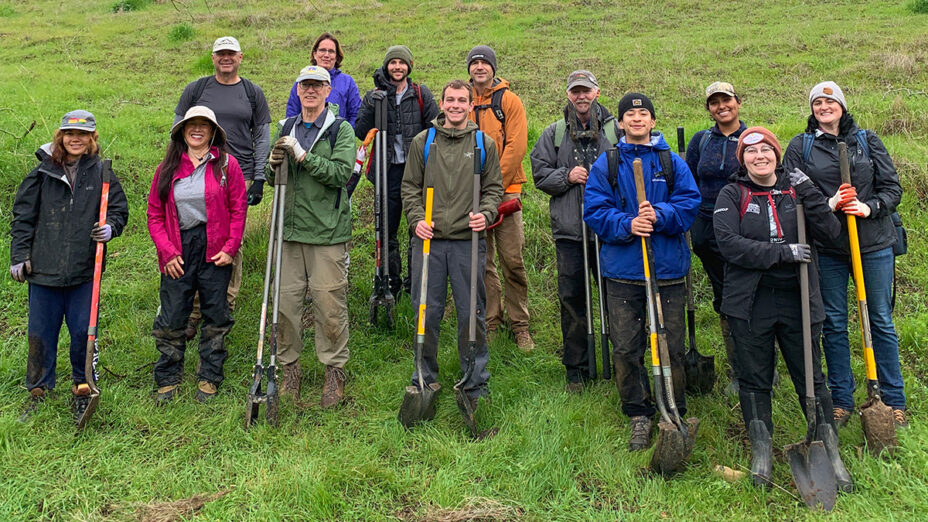
If you’ve been keeping up with the news, it’s understandable if you’re feeling overwhelmed. But don’t let that make you lose hope. Right now, it is more important than ever to take action.
We can do so much at the individual, community, city, state, and corporate level to continue to address the climate crisis.
How You Can Make a Difference
There’s a lot you can do at home to address both the cause and impact of the climate crisis while nurturing resilient communities.
Engage Your Local Government

Save Mount Diablo staff member Juan Pablo Galván Martínez presents a petition with more than 1,700 signatures urging Concord to drop Seeno and their partners as the Master Developer of the Concord reuse project at a Concord City Council meeting.
Since the day of our founding, we’ve been speaking out for nature and working with local governments to protect Mount Diablo’s open spaces.
Many of Save Mount Diablo’s most significant conservation victories, like those in Concord, were made possible by our supporters.
They joined us to express public support for conservation by speaking up at city council and county board of supervisor meetings and messaging their local representatives.
Advocating in favor of climate-smart and nature-first policies is a strong way to make a significant impact in your community.
Everyone who works with local advocacy groups to promote conservation, bike infrastructure, renewable energy, measures to decrease food waste, and other environmental policies helps create the momentum necessary for real change.
This is the work that builds sustainable and resilient communities.
Plant Native Plants!

Planting milkweed at Curry Canyon Ranch. Photo by Haley Sutton
Since the 1980s, western monarch butterfly populations have decreased by more than 95 percent! Many other pollinator populations have also declined in recent decades.
Climate change, pesticide use, and habitat loss are all making an impact on pollinator populations.
You can fight for their survival by giving pollinators, birds, and other wildlife refuge in your yard. Plant keystone native plants to help reverse the decline of pollinators and support your local ecosystem.
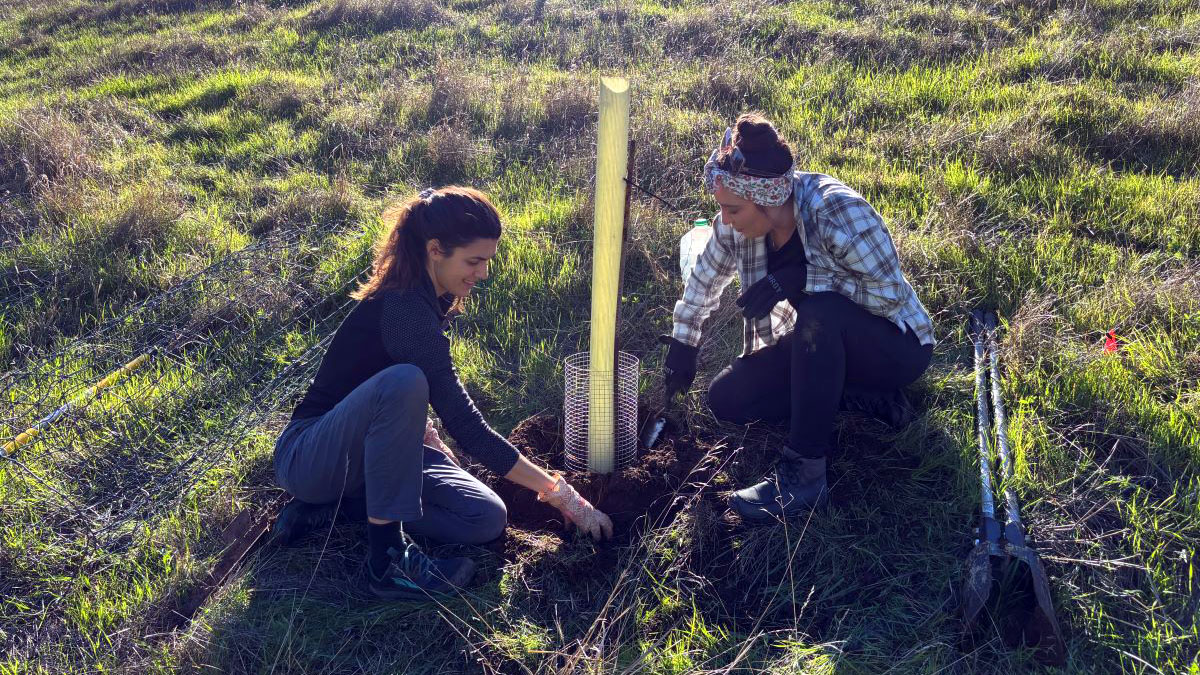
Planting blue oak acorns. Photo by Laura Kindsvater
If you live in the Bay Area or nearby, check out these 19 plants that would make great additions to your yard.
You can also volunteer with local organizations such as Save Mount Diablo or Friends of Concord Creeks that plant native plants in local wild lands.
These native plants are carbon sinks, removing carbon dioxide from the atmosphere. Native plants have deep root systems that store carbon underground. They also help mitigate the effects of climate change and habitat fragmentation on wildlife.
Individual Choices Matter
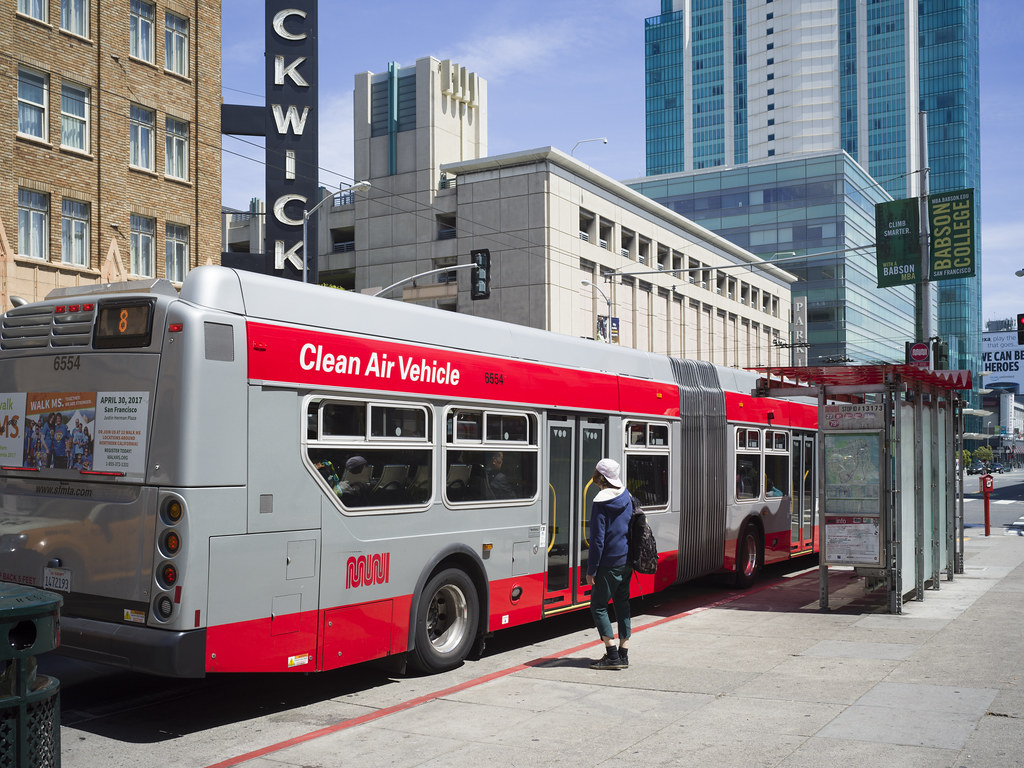
Photo by Christopher Michel / CC BY
Doing things like buying locally made goods, using public transportation, switching to an electric car, electrifying our homes, and installing or purchasing solar power are also very important.
Forty-two percent of the U.S.’s energy-related emissions come from our homes and our vehicles. And we have the power to change this.
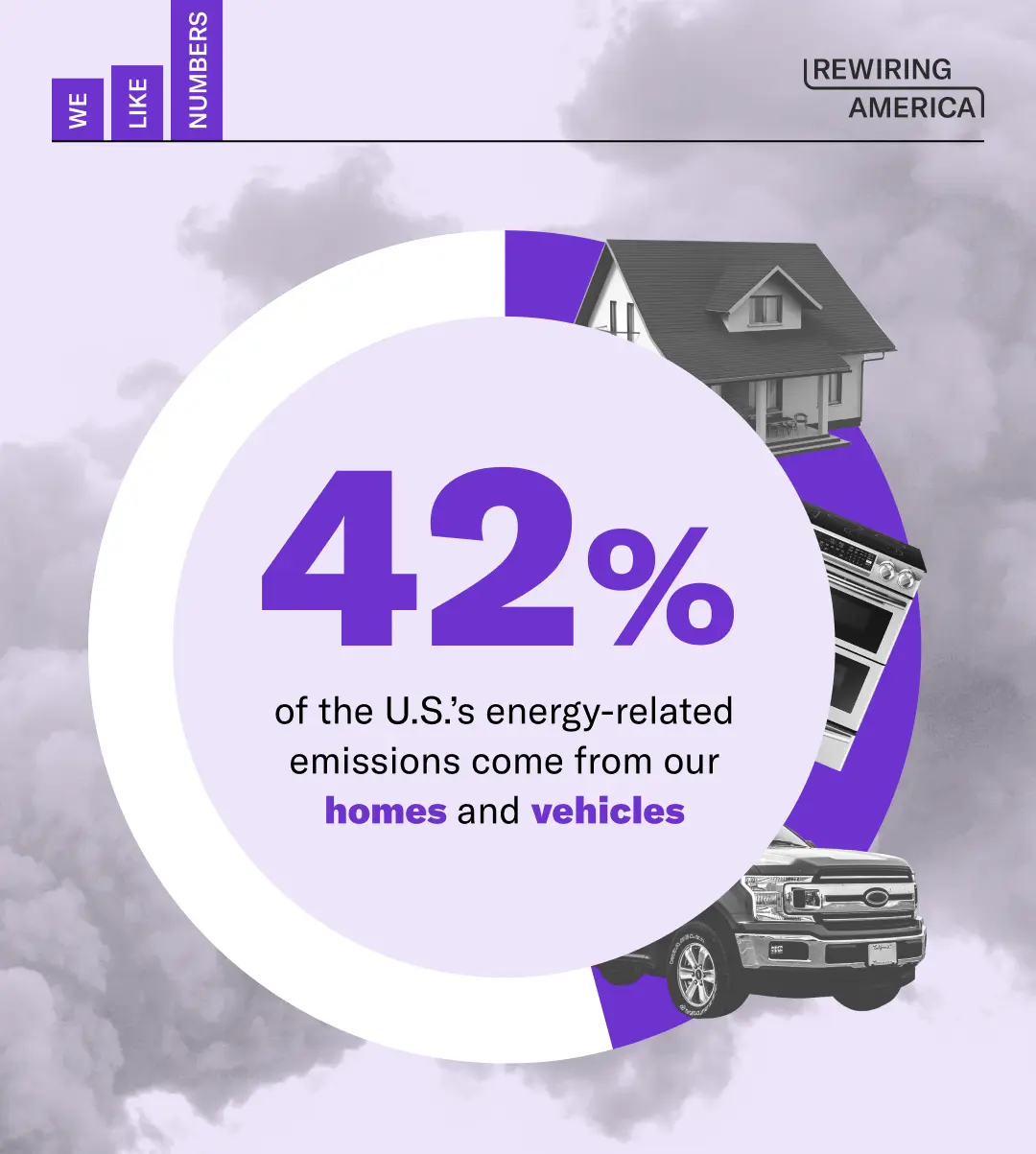
Graphic by Rewiring America. Source EPA Emissions Inventory
According to Yale Climate Connections, about another one-third of climate-change-causing pollution is linked to food.
Food waste and animal-based foods, especially beef, are two of the largest culprits.
If food waste is sent to the landfill, it produces methane, which is a major driver of climate change.
Composting and eating less meat and dairy are some great lifestyle changes you can implement to address the climate crisis and make a positive impact during your day-to-day life.
See the Yale Climate Connections solutions hub and Project Drawdown’s table of solutions to learn more about the impact of various actions we can take to decrease our carbon output. There are so many ways to make a big positive impact!
Connect with Your Community
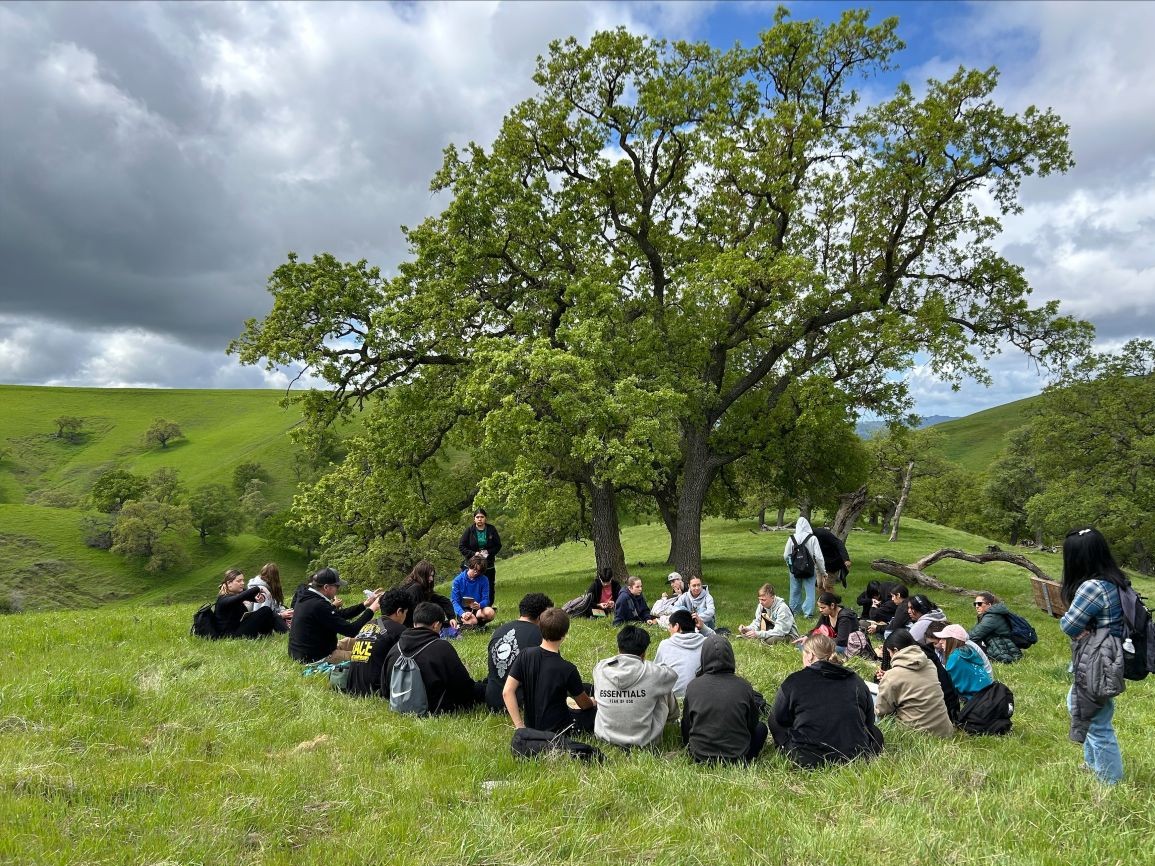
High school students discuss their thoughts on nature during a field trip to our Mangini Ranch Educational Preserve. Photo by Mary Nagle
Making climate-friendly personal choices feels great, and when you tell others about it, you may inspire them to join you!
What does this look like?
- Connecting with your community can look like discussing the actions you can take with friends and family.
- Or it can look more like organizing your neighbors and pushing community institutions to better respond to the climate crisis.
- It can also look like lending your unique skills to local climate groups, helping to amplify their message.
During these challenging times, it’s important to remember that you can make a big impact locally if you speak up about the climate crisis and connect with others who are working for a more climate-friendly future.
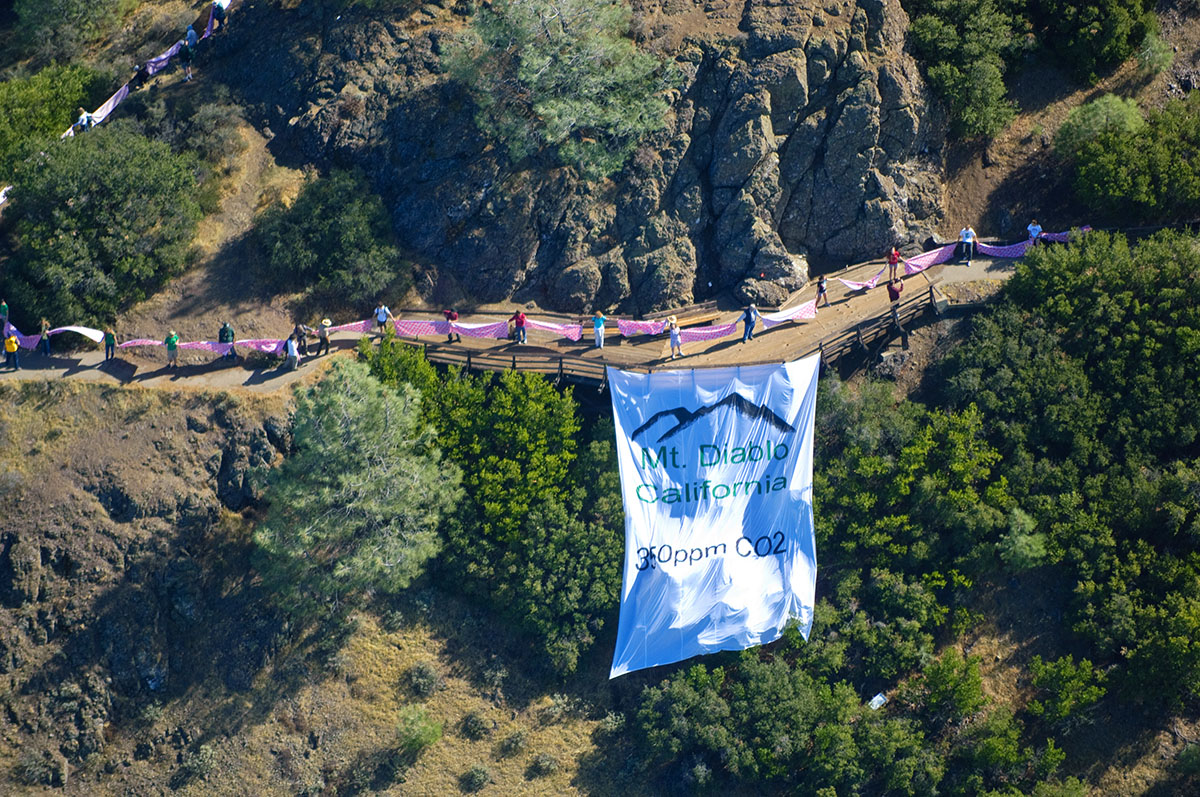
Community members coming together on the Mary Bowerman Trail in Mount Diablo State Park, publicizing the need to decrease carbon dioxide pollution below 350 ppm. Photo by Scott Hein
Learn More about Climate Solutions with These Resources
- Yale Climate Connections Solutions Hub
- Audubon Society’s Climate Action Guide
- Rewiring America
- Project Drawdown
- Regeneration
- 350.org
- Third Act
- Homegrown National Park
- Bringing Back the Natives
- Calscape: Find plants native to your neighborhood or city
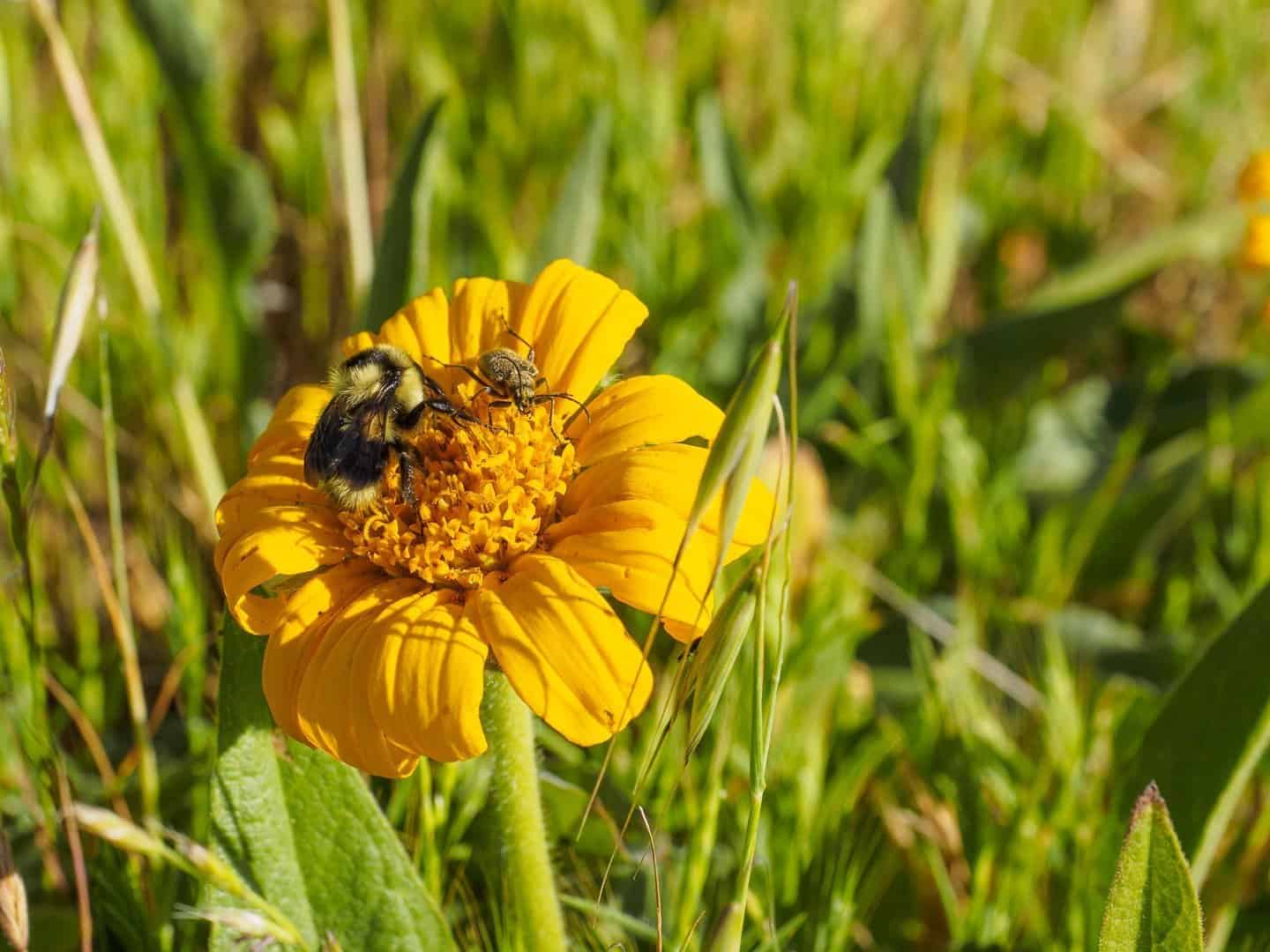
Narrow leaf mule ears (Wyethia angustifolia) with pollinators. Photo by Scott Hein

